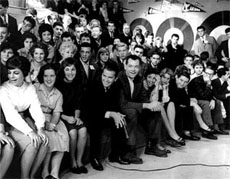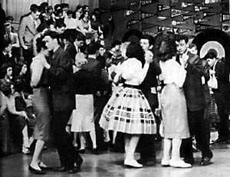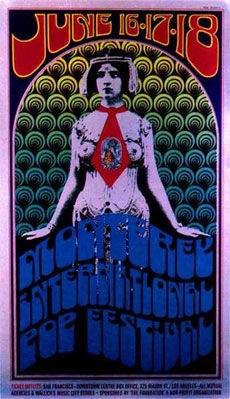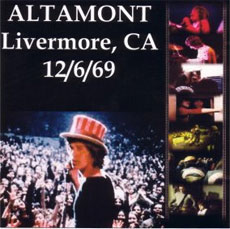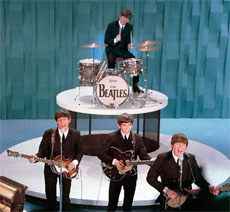🎧 Concept Albums: When Rock Music Got a Plot Twist
Not all albums are created equal. Most are just a solid collection of songs—maybe a hit or two, a few tracks you skip, and one weird interlude no one understands. But then there are themed albums, also known as concept albums. These aren’t just collections of songs—they’re musical journeys, carefully curated around a central idea, storyline, or emotional thread.
They’re what happens when musicians say, “You know what? Let’s tell a whole story.”
🧱 Before Rock Rolled In
Rock music may have made the concept album famous, but the idea had already been simmering on the back burner for decades.
Woody Guthrie’s Dust Bowl Ballads (1940) was essentially a musical scrapbook of the Great Depression, filled with stories of struggle, dust, and migration. It’s widely considered the first real concept album. Kind of bleak, sure, but important.
Then there’s Frank Sinatra, who basically turned heartbreak and mid-century loneliness into a fine art. Albums like In the Wee Small Hours (1955) and Come Fly With Me (1958) weren’t just playlists—they were moods. Sinatra didn’t just sing love songs; he made you feel like you were sipping a cocktail alone in a rain-soaked lounge in 1956.
And Nat King Cole? Classy as ever. Albums like After Midnight (1956) had that late-night jam session vibe, and Penthouse Serenade was basically a musical invitation to sit by a piano and just… feel fancy.
Oh, and Johnny Cash gets honorable mention with Songs of Our Soil (1959), an entire album about mortality. Nothing says “country music” quite like a cheerful tune about death.
🌊 Enter Rock and the Golden Age of Themes
By the time the 1960s rolled around, rock musicians weren’t content with just cutting singles. The recording industry had improved, studios were experimenting with multi-track wizardry, and some musicians were ready to take big swings.
🎸 The Ventures: Studio Wizards in Disguise
The Ventures—often overlooked but always reliable—quietly cranked out a series of themed instrumental albums in the early ’60s. Surf rock? Check. Country? Check. Outer space? You bet. They even did TV themes and psychedelic jams. It was like a musical buffet of whatever vibe you wanted that week.
Their sales were off the charts. Nobody knew what they looked like, but everybody had one of their albums.
🐕 The Beach Boys: Pet Sounds and Pure Genius
Then came Brian Wilson and Pet Sounds (1966), an album so musically ambitious that it still gives music critics goosebumps.
With lush arrangements, emotional depth, and lyrics that capture that “I’m 19 but suddenly feeling deep existential dread” energy, Pet Sounds wasn’t just an album—it was an experience. Even Paul McCartney has said it inspired Sgt. Pepper.
It’s often considered one of the greatest albums ever made—and it started as an album about growing up, longing, and love.
🎺 The Beatles: Sgt. Pepper Raises the Bar
If Pet Sounds opened the door, The Beatles smashed it off the hinges with Sgt. Pepper’s Lonely Hearts Club Band(1967). It wasn’t just an album—it was a fictional band, a psychedelic experiment, and a full-on artistic statement in Technicolor.
This album basically said: You can do anything with music now. And everyone believed it.
🌈 The Moody Blues: Days of Future Passed
Not to be outdone, The Moody Blues took things in a wonderfully weird direction with Days of Future Passed (1967), a symphonic journey through a single day—from dawn to dreams. It was rock meets orchestra meets “What did I just listen to?”
Spoiler: it’s amazing. And yes, it’s okay to cry a little at “Nights in White Satin.”
🎭 Then Came Tommy
In 1969, The Who unleashed Tommy—a full-blown rock opera. Not just themed, not just emotional—this thing had a plot.
Written by guitarist Pete Townshend, Tommy tells the story of a deaf, mute, and blind boy who becomes a spiritual pinball-playing savior. It’s ambitious, messy, brilliant, and utterly rock and roll.
This wasn’t just a collection of songs—it was practically Broadway with guitar feedback.
🎁 Guilty Pleasures: Themed Compilations
Okay, confession time. Not all themed albums are high art. Sometimes a theme is just a marketing gimmick in a shiny cardboard sleeve. You know the ones:
- The World’s Greatest Love Songs
- 20 Best Cha-Chas Ever
- Songs to Cook Lasagna By (okay, maybe I made that one up)
Still, they serve a purpose. Especially around the holidays. Who doesn’t have at least three versions of Jingle Bell Rockin their playlist?
Let’s not judge. Life’s too short to pretend you don’t own Monster Ballads on CD.
🎶 Final Thoughts: When Albums Tell Stories
Themed albums turned music from a series of hits into something bigger—an experience. Whether they’re telling a story, exploring an idea, or just capturing a vibe, these albums invite listeners to step inside a world and stay awhile.
From Pet Sounds to Sgt. Pepper, from orchestras to pinball messiahs, concept albums gave rock a sense of depth—and a whole lot of drama.
And let’s be honest, we love a little drama in our music.

